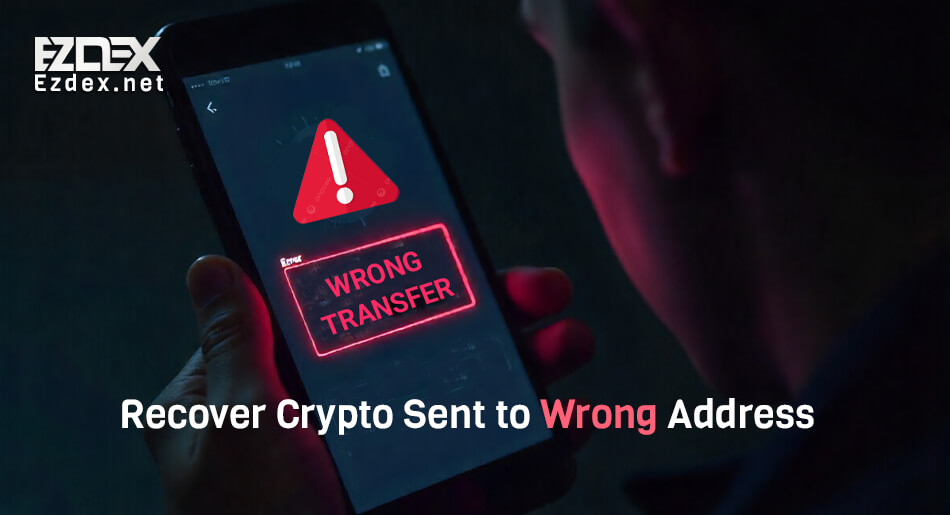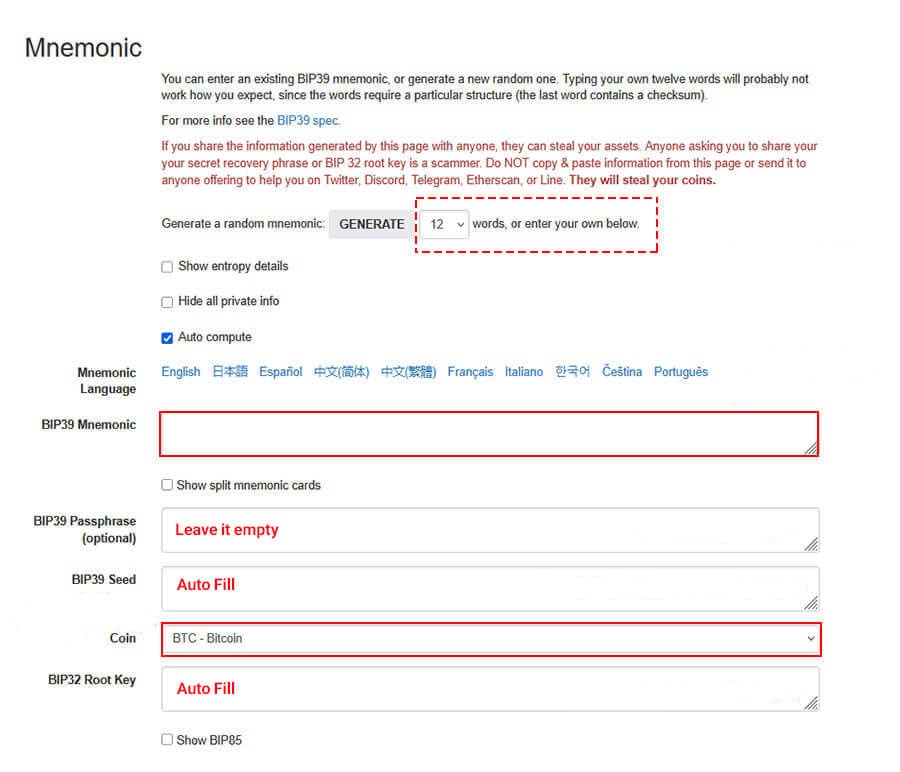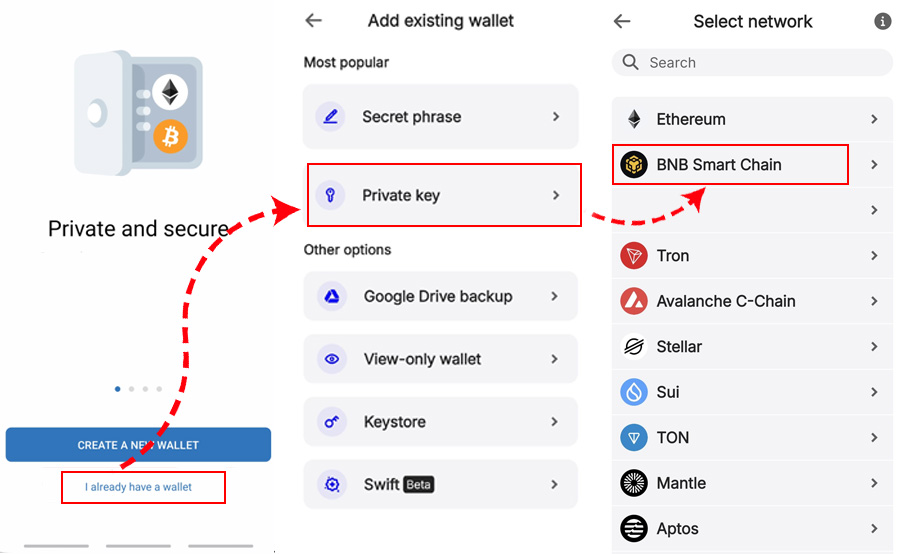How to Recover Cryptocurrency Sent to Wrong Address or Network?

Sending cryptocurrency to the wrong address is a very common issue in the world of crypto. A moment of inattention is enough for your funds to go to the incorrect address, potentially losing part or even all of your investment. Since blockchain transactions are irreversible, it is usually impossible to recover the currency—except in special cases and with the help of certain individuals or support teams. In this article, we explain why these mistakes happen, what their consequences are, and what actions can be taken if such an event occurs. We also introduce some simple and practical solutions to help you recover your assets if cryptocurrency is sent to the wrong address or network.
Table of Contents
Common Mistakes in Sending Cryptocurrency
It can be said that human error is the main and often the only reason for sending cryptocurrency to the wrong address. Several scenarios exist:
Sending Cryptocurrency to the Wrong Wallet Address
Cryptocurrency wallet addresses are usually long combinations of letters and numbers that appear meaningless at first glance. These addresses are designed for security, but this also makes even the smallest mistake problematic.
If you enter even a single wrong character, your transaction may be sent to another wallet. Since blockchain transactions are irreversible, this mistake can easily result in the permanent loss of cryptocurrency.
However, the mistake is not always on the user’s side.
Some malware and viruses can secretly replace the wallet address you copied with the hacker’s address. Everything may appear correct because you are performing the usual "copy and paste" action, but in the background, the malware redirects your funds. This type of attack is extremely dangerous because it happens without any signs, and the user only notices it after the transaction is recorded, often too late.
For this reason, it is always recommended to carefully check the first two or three and the last few characters of the destination address before sending. Using reputable wallets and software, keeping your system updated, and avoiding unknown downloads will also help protect you from these risks.
Sending Cryptocurrency to the Wrong Network
When transferring cryptocurrencies, entering the destination address alone is not enough. Each coin can be transferred on multiple networks, and if the wrong network is selected, your funds may get stuck and become inaccessible.
For example, ERC-20 tokens operate on the Ethereum network, while BEP-20 tokens belong to the Binance Smart Chain (BSC). The confusing part is that addresses on these two networks look almost identical and both start with "0x." A user might think everything is correct and confirm the transaction, but in reality, the currency has been sent to the wrong network. While this does not always lead to complete loss, recovering the funds can be difficult, complicated, and often impossible.
This mistake is especially common in Tether (USDT) transfer networks:
- Ethereum network (ERC-20)
- Binance Smart Chain network (BEP-20)
- Tron network (TRC-20)
- Other networks, like Avalanche and Polygon, also exist.
Imagine you want to send Tether on the Tron network but accidentally select Ethereum. The destination wallet may not support that type of Tether, causing your funds to get stuck on the blockchain. Alternatively, you may send funds to an exchange that only supports one of the networks. The result? A lot of trouble retrieving the currency, or even complete loss.
To avoid such problems, before any transfer:
⚠️Carefully check the intended network.
⚠️Confirm with the destination wallet or exchange that the network is supported.
⚠️If unsure, test the transfer with a small amount first.
A moment of extra caution can make the difference between a successful transaction and a major loss.
Not Entering a Tag or Memo When Transferring
In some crypto networks, such as Ripple (XRP) and Stellar (XLM), entering only the destination address is not enough. These networks use a shared address for multiple users in some exchanges and wallets.
How does the system know which transaction belongs to which user? The answer is a small but crucial field called a "memo" or "tag". The memo works like a hotel room number, while the wallet address is like the hotel address. It ensures the funds are credited to your account at that shared address.
If you send Ripple, TON, Solana, or Stellar (or other coins with this feature) to an exchange and enter the wrong memo or forget it completely:
- The funds reach the correct address, but without a memo, the exchange cannot identify the owner.
- Your assets remain in the main exchange account and are not credited to your personal account.
- Recovering the assets requires submitting a support ticket, which can be long, complex, and sometimes unsuccessful.
To prevent mistakes, always pay attention to wallet or exchange warnings regarding memos, and copy and paste the memo exactly as shown.
If the destination is a personal wallet that does not require a memo, there is usually a “No Memo” option that should be enabled.
Is It Possible to Recover Cryptocurrency Sent by Mistake?
When you send cryptocurrency to the wrong address, it’s like delivering a package to the wrong location—but with one major difference: on the blockchain, there’s no postman who can knock on your door and return the package. Blockchain transactions are conducted without intermediaries, and once confirmed, no bank, company, or organization can reverse them. Everything happens exactly according to the data you entered, even if that data is incorrect!
What happens next depends on the type of mistake. Here are all the possible scenarios:
📌If You Sent Cryptocurrency to the Wrong Address:
Non-existent or invalid addresses: If the destination address does not exist or does not comply with the network standard, the transaction usually won’t be confirmed. In this case, the cryptocurrency returns to the sender’s wallet, but the transfer fee is lost.
Existing but incorrect addresses: This is the worst-case scenario. The address exists but does not belong to you or your intended recipient. The blockchain sends the funds to that address, and the assets go either to another person’s wallet or to an address with no private key. In both cases, access is almost impossible, and the funds are considered “burned.”
📌If You Sent Cryptocurrency to the Wrong Network:
This scenario is a bit more complex. Many cryptocurrencies exist on multiple networks, and selecting the wrong network can have different outcomes.
Compatible networks: For networks that are compatible, such as EVM-based networks (Ethereum, Binance Smart Chain, Polygon, etc.), recovery is possible. Usually, by importing the private key into a wallet on the correct network, you can view and transfer your assets.
Incompatible networks: For incompatible networks (e.g., sending TRC-20 Tether on the Ripple network or vice versa), recovery is unfortunately very unlikely or almost impossible.
📌If You Forgot to Enter a Tag or Memo:
This situation is different from a wrong address. You entered the correct address, and the funds reached the destination, but the exchange or wallet cannot determine which user the funds belong to.
It’s like sending a package to a large apartment building: the building address is correct, the package has arrived, but it has no apartment number or recipient name. The package sits in the lobby, and no one knows who owns it.
When a memo or tag is missing, the funds go to the main account of the exchange or wallet, and the system does not automatically credit them to your account. You may see that the transaction was successful, but your balance does not change. In this case, you need to contact the destination support team, provide transaction details, and request a manual transfer to your account.
Immediate Actions for Incorect Crypto Transfer
If you notice the mistake immediately and act quickly, there is still a chance to stop the transaction before the funds are sent. Time is critical here—the sooner you act, the higher the chances of success.
Step 1: Check the Transaction Status
First, determine whether the transaction has been confirmed or is still pending. Use official blockchain explorers:
- Etherscan for Ethereum
- BscScan for Binance Smart Chain
- Tronscan for Tron
- Blockchain.com for Bitcoin
Enter the Transaction ID (TxID) to check the status:
If the transaction is confirmed, you must use other recovery methods discussed below.
If it is still pending, cancellation or modification may be possible.
Pending Transactions:
🔵Bitcoin network: Bitcoin supports Replace-by-Fee (RBF). If your wallet supports RBF, you can resend the same transaction with a higher fee to invalidate the previous one. Miners will confirm the new transaction and discard the old one.
🔵Ethereum and other EVM-based networks: Transactions have a "nonce" that defines their order. To cancel a pending transaction:
- Send a new transaction with the same nonce
- Set a higher gas fee
- You can send funds back to your own account to override the previous transaction
- If the new transaction is more attractive to miners, it will be confirmed, and the wrong transaction will be removed from the queue.
How to Recover Cryptocurrency Sent by Mistake
Now, if the transaction has been confirmed and the transfer completed, depending on the situation, you should use one of the following methods.
Recover Crypto Sent to Wrong Network with Private Key
Usually, if you enter a wallet address on the wrong network, the wallet detects it and blocks the transaction. However, the address formats of Binance Smart Chain and Ethereum are similar, so the wallet may not recognize the error.
To recover in this case, you need access to the destination wallet or assistance from its support team.
If the destination wallet belongs to you, follow this guide (example: sending Binance Coin to Ethereum by mistake):
1. Visit a Mnemonic private key derivation website.
2. Enter your wallet’s recovery phrase (BIP39).
3. Select the coin you mistakenly sent.
4. Wait for the table of derived addresses to appear, then copy the private key for the correct network (BNB Smart Chain in this example).

5. Download and install Trust Wallet. On the open screen, select “I already have a wallet.”
6. Choose BNB Smart Chain to import the private key.
7. Paste the private key and tap “Import.”

This will restore access to cryptocurrency sent to the wrong network.
Contact Support for Transfers Without Tag or Memo
As mentioned, in such cases, your funds reach the destination account, but the system cannot credit them to your account. Only the destination support can help.
To speed up the process, prepare the following information when submitting a support request:
- Transaction ID (TxID) or hash
- Amount of cryptocurrency sent
- Transfer network
- Destination address
- Transaction time
- Screenshot of the transaction in your wallet
Support will match this information with their internal records, assign the correct memo/tag, and credit the funds to your account.
How to Recover Crypto Sent to the Wrong Address
Returning cryptocurrency sent to a wrong address is one of the hardest and sometimes impossible tasks in blockchain. No bank or central authority can stop or reverse the transaction. The result depends on the destination address:
Non-existent or invalid addresses: Transaction is usually rejected, and the funds return to your wallet.
Existing addresses not belonging to you: Funds are sent to that address; if it has no owner or the owner cannot be reached, recovery is impossible.
Addresses belonging to an exchange, wallet, or friend: If the private key owner cooperates, you can recover the funds by requesting support or assistance from the friend.
Read the latest news and announcements in this section.
Read the latest tutorials about payment service providers in this section.
You can access full guides and tutorial to use EZDEX services in this section.
Step by step tutorials and photo guides are available in this section.
Access the latest information about financial and economical matters in Turkey in this section.
Access the latest information about financial and economical matters in UAE in this section.
Explore expert guides, tips, and strategies for understanding and working with gold. Learn everything from basics to advanced knowledge.